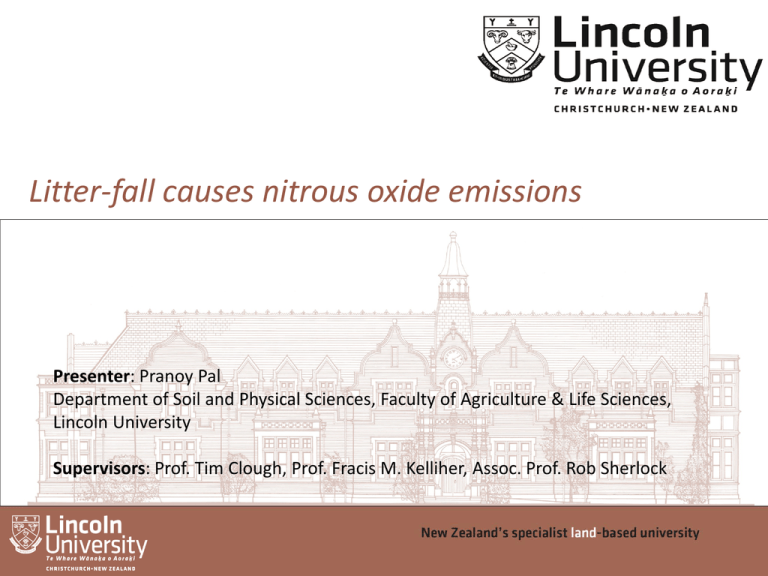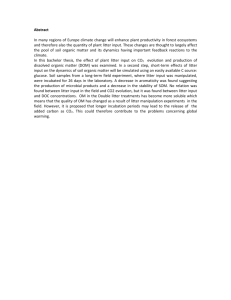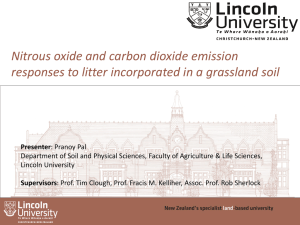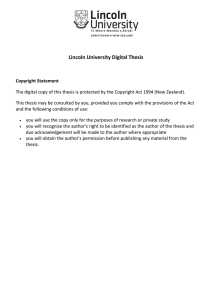Litter-fall causes nitrous oxide emissions
advertisement

Litter-fall causes nitrous oxide emissions Presenter: Pranoy Pal Department of Soil and Physical Sciences, Faculty of Agriculture & Life Sciences, Lincoln University Supervisors: Prof. Tim Clough, Prof. Fracis M. Kelliher, Assoc. Prof. Rob Sherlock Outline • Introduction Litter-fall: what, how, fate? N transformations Nitrous oxide (N2O) • Objectives of the experiment • Experimental setup and methodology • Results and conclusion Introduction 90% of the total farm area in New Zealand is under pastoral system grazed under a rotational grazing system mainly of ryegrass and clover. Litter-fall occurs (Pal et al. 2012) Close observation of dairy animals during grazing showed that herbage although harvested, could fall from their mouth onto the soil, could be sheared due to hoof movement and fall onto the soil. these processes are termed ‘litter-fall’ which creates pasture ‘litter’. Introduction (contd.) 4 Introduction (contd.) Soil surface decomposition Fate of litter-fall Partial incorporation via animal treading Complete incorporation Pasture litter, similar to any other plant material, contains nitrogen and carbon, which during decomposition is released back to the soil or lost as nitrous oxide. 5 Introduction (contd.) Nitrous oxide (N2O): Laughing gas & greenhouse gas 298 times higher GWP than CO2, 60% of the total GHG emissions Also precursor of stratospheric ozone depletion 6 Materials and methods Experimental Site – pasture site at Lincoln University 7 Materials and methods (contd.) 15N-labelled ryegrass plants grown in a glasshouse Materials and methods (contd.) Litterbag preparation Materials and methods (contd.) Treatment notation Pasture clipping Litter addition Control C CL × (pasture–5cm high) Shoots × × (chopped–1cm) SL SR0 SR2 × (sieved soil–4mm) × (sieved soil) × (sieved soil) × × × denotes absence of pasture clipping and/or litter addition. denotes presence of pasture clipping and/or litter addition. Roots × × × × - surface applied - buried (2cm) Results and discussion • Surface-placed ryegrass litter produced >70% of litter-derived N2O • Litter-N contributed to both the 15N enrichment of soil NO3– and N2O emissions. • 38–75% of the cumulative emissions occurring within 4–10 d of treatment application. • EF = 1.2% ~ 1% default value of IPCC. • N2O produced via ammonification followed by a coupling of nitrification and denitrification during litter decomposition. Future research: • Field studies - different pasture species and different litter-fall rates Thank you!!! Questions please





